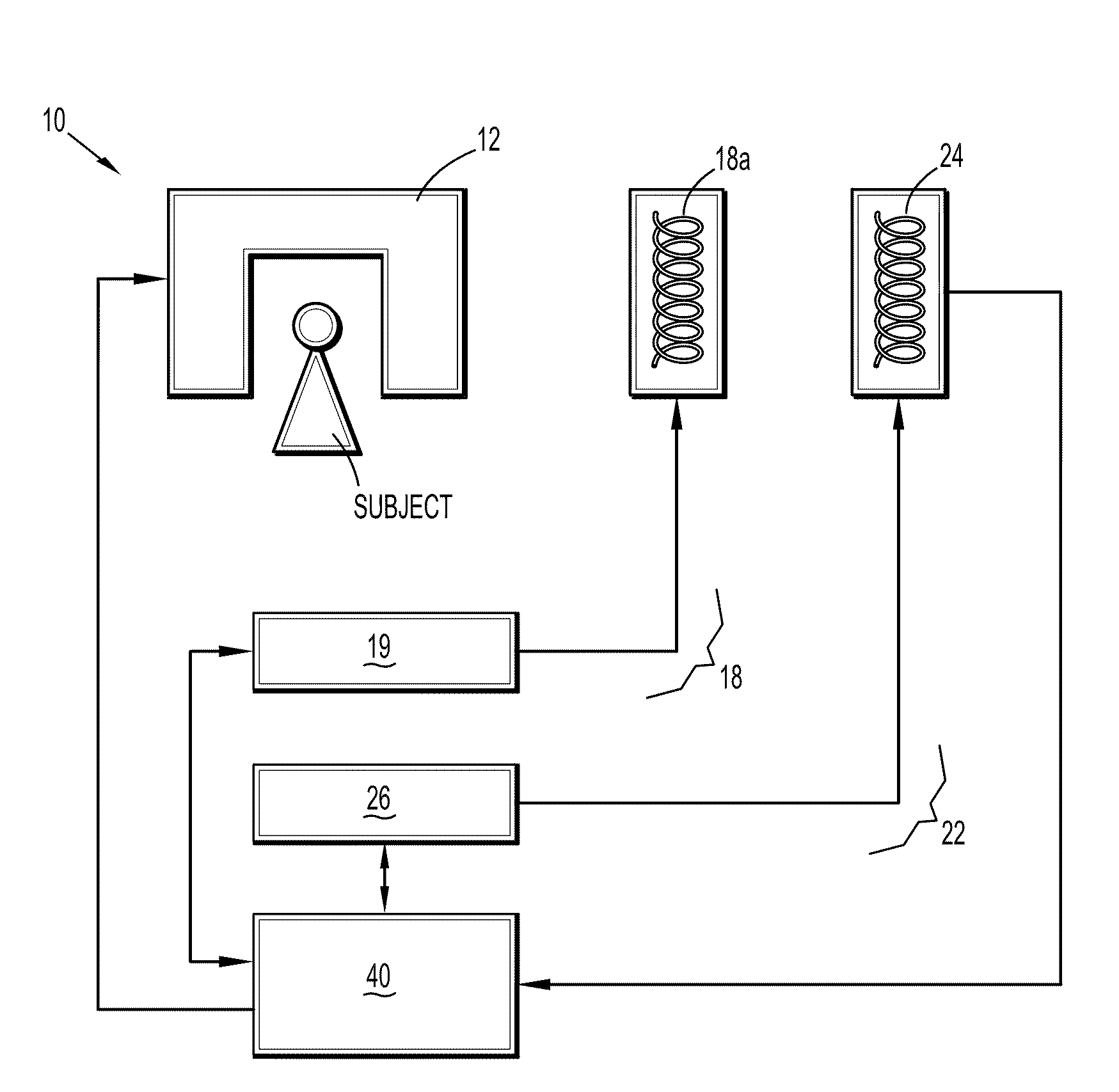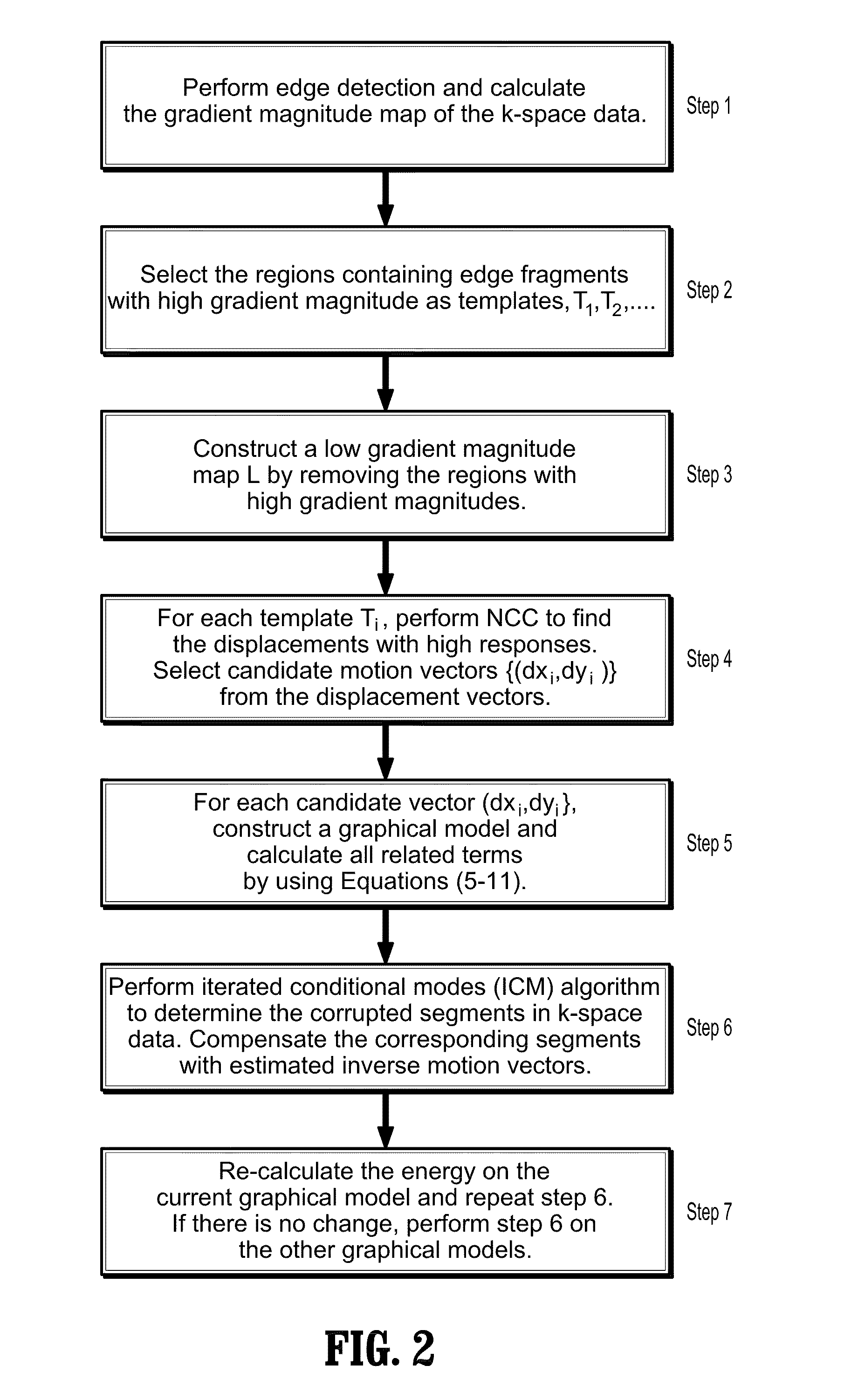Method for correcting motion artifacts in magnetic resonance images
a magnetic resonance image and motion artifact technology, applied in the field of magnetic resonance imaging, can solve problems such as motion artifacts, and achieve the effect of satisfying the compensation of motion artifacts
- Summary
- Abstract
- Description
- Claims
- Application Information
AI Technical Summary
Benefits of technology
Problems solved by technology
Method used
Image
Examples
Embodiment Construction
[0022]FIG. 1 is a block diagram of an MRI scanner 10 that corrects MRI motion artifacts operable in accordance with the present invention. A main magnet 12 generates a strong static magnetic field in an imaging region where the patient or the specific body part of the patient to be examined is introduced. The magnet 12 is used to polarize the patient's body part, i.e., certain atoms in the patient's body part that were previously randomly-ordered become aligned along the magnetic field. A gradient coil system 18, having a gradient coil 18a and a gradient coil control unit 19, generates a time-varying linear gradient field in respective spatial directions, x, y and z, and spatially encodes the positions of the polarized or excited atoms. An RF system 22, having an RF antenna 24 and a pulse generation unit 26, transmits a series of RF pulses to the patient's body part to excite the “ordered” atoms of the patient's body part. A control or computer system 40 coordinates the pulse genera...
PUM
 Login to View More
Login to View More Abstract
Description
Claims
Application Information
 Login to View More
Login to View More - R&D
- Intellectual Property
- Life Sciences
- Materials
- Tech Scout
- Unparalleled Data Quality
- Higher Quality Content
- 60% Fewer Hallucinations
Browse by: Latest US Patents, China's latest patents, Technical Efficacy Thesaurus, Application Domain, Technology Topic, Popular Technical Reports.
© 2025 PatSnap. All rights reserved.Legal|Privacy policy|Modern Slavery Act Transparency Statement|Sitemap|About US| Contact US: help@patsnap.com



